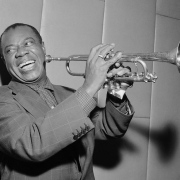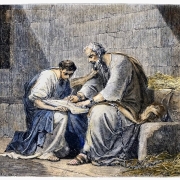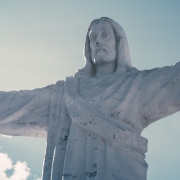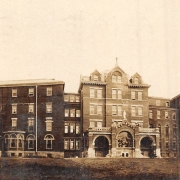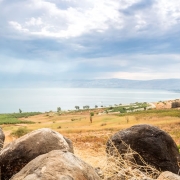“Therefore, since we are surrounded by such a great cloud of witnesses, let us throw off everything that hinders and the sin that so easily entangles. And let us run with perseverance the race marked out for us,”
– Hebrews 12:1
All Saints’ Day, a revered tradition in the Methodist church as well as in many other Christian denominations, was celebrated in our congregation on the first Sunday of November. This day, deeply embedded in the fabric of ecclesiastical observance, was marked by a poignant and reflective service. Our pastor, with careful consideration and pastoral sensitivity, led us in honoring the memory of the dearly departed members of our church family, of whom we had lost five in the preceding year.
The sanctuary, usually filled with the voices of an active congregation, took on a reverent silence as candles were lit, one for each soul that had left an indelible mark on our community. The gentle glow stood as a testament to the lives they had led among us—lives of faith, service, and love.
In a deeply moving extension of this ritual, the pastor invited each member of the congregation to come forward. With solemn steps, we approached the altar, each carrying a candle, ready to ignite it in memory of someone who had touched our lives profoundly. The invitation was not limited to the remembrance of those within our local congregation but was extended to any personal saints we held dear in our hearts. As we lit our candles, the altar became a beacon of remembrance, with every flame representing a story, a life, a sacred memory.
The commemoration of All Saints’ Day varies widely across Christian denominations. Its origins can be traced back to the early Christian practice in the Catholic Church, which formally set aside November 1st to honor saints and martyrs. For Western Christians, this day is fixed in the liturgical calendar, while Eastern Orthodox Christians celebrate it on the first Sunday after Pentecost.
In the Catholic tradition, All Saints’ Day is a Holy Day of Obligation, calling the faithful to Mass and to reflect on the exemplary lives of the saints who have achieved the beatific vision—the direct experience of God in Heaven. The broader Christian perspective also embraces this day as an opportunity to honor all believers who have departed this life in the hope of the resurrection, thus maintaining a spiritual connection with the entire communion of saints.
Following All Saints’ Day, All Souls’ Day on November 2nd is observed, which is especially dedicated to praying for the faithful departed who are believed to have been in Purgatory, undergoing purification in preparation for Heaven. These sequential days of observance encapsulate the Christian doctrine of the afterlife and the enduring community that includes all believers, transcending the earthly plane.
There is a common misconception, which I once shared, that the gospel song “When the Saints Go Marching In” is associated with All Saints’ Day celebrations. While not specifically written for this day, many churches embrace it during their services because its chorus resonates with the day’s themes. The yearning expressed in the lyrics, “Oh, when the saints go marching in, Lord, I want to be in that number,” expresses a personal sentiment to be counted as a saint and mirrors the intention behind All Saints’ Day—to honor the holy and the faithful.
This song’s origins are as spiritual, and its rise to prominence was significantly influenced by the iconic recordings of Louis Armstrong in the 1930s. Since then, it has become an emblematic tune of hope and celebration in the face of life’s adversities. I have included at the bottom of this blog a link to hear Louis Armstrong’s version. Simply click on the link to hear his wonderful rendition!
Denominational practices do vary: some focus strictly on honoring recognized saints, while others, like our Methodist tradition, take a different approach. We use this day not only to honor the canonized saints but also to remember all who have lived out their faith in Jesus Christ and have been a beacon of His light in the world.
This year’s service was particularly personal for me. The pastor’s call to remember those who have gone before us widened the scope of our commemoration. I lit candles for my father and grandmother, two pillars of my life whose presence I’ve felt continuously since their passing. Their memory does not eclipse the central place of Jesus and the Holy Spirit as the source of my hope but rather complements it, offering a comforting presence in significant moments of my life.
Such experiences are not unfamiliar to those in pastoral care professions. Chaplains, grief counselors, and hospice clergy frequently encounter individuals who sense the nearness of their ancestors, especially as they navigate the profound waters of grief or approach life’s end. Some report visions or a palpable sense of those who have passed on being near, offering comfort or guidance.
Our scripture for All Saints’ Day, Hebrews 12:1, beautifully encapsulates this sentiment. It acknowledges the saints as a “great cloud of witnesses,” whose lives and legacies continue to inspire and encourage us in our own faith journeys. This imagery of being surrounded by the faithful who have finished their race challenges us to live with perseverance and righteousness, just as they did.
Reflecting on this, it is both humbling and comforting to realize that we are accompanied not only by the Holy Spirit but also by the legacies of our ancestors. And so, with a sense of unity that spans beyond time, we can look forward to the day when we too will join that holy procession, as we continue to sing in hope and anticipation, “Oh, when the saints go marching in, Lord, I want to be in that number,” longing for the day we stand together with all the faithful in the eternal presence of God. On this All Saints’ Day, we are reminded of our sacred connection to the past and the future, united in the present by our shared faith and the love that transcends all boundaries.

